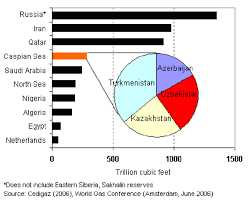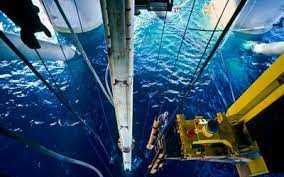What is Trillion Cubic Feet (Tcf)?

Trillion Cubic Feet (Tcf) is a unit of measurement used in the energy industry to quantify the volume of natural gas reserves or production. It represents one trillion cubic feet of natural gas, which is a significant amount.
Natural gas is a vital source of energy used for various purposes, including heating, electricity generation, and industrial processes. To understand the importance of Tcf, it is essential to grasp the scale of natural gas consumption globally.
The Importance of Trillion Cubic Feet (Tcf)
The world’s energy demand continues to rise, and natural gas plays a crucial role in meeting this demand. Trillion Cubic Feet (Tcf) is used to measure the vast quantities of natural gas reserves and production, providing a standardized unit for comparison and analysis.
Calculation of Trillion Cubic Feet (Tcf)
To calculate Trillion Cubic Feet (Tcf), the volume of natural gas is measured in cubic feet and then converted to trillions. One trillion cubic feet is equivalent to 1,000 billion cubic feet or 1,000,000 million cubic feet.
The calculation can be represented as:
- 1 Tcf = 1,000 billion cubic feet
- 1 Tcf = 1,000,000 million cubic feet
It is important to note that Tcf represents a large volume of natural gas and is typically used when discussing significant reserves or production levels.
Real-life Example of Trillion Cubic Feet (Tcf)
To put the concept of Trillion Cubic Feet (Tcf) into perspective, let’s consider a real-life example. The Marcellus Shale, located in the eastern United States, is one of the largest natural gas fields in the world.
According to estimates, the Marcellus Shale has a potential resource of over 500 Tcf of natural gas. This vast reserve has transformed the energy landscape in the United States and has positioned the country as a major player in natural gas production.
Calculation of Trillion Cubic Feet (Tcf)

Calculating Trillion Cubic Feet (Tcf) involves determining the volume of natural gas in a reservoir or a country’s total gas reserves. The calculation is based on several factors, including the size of the reservoir, the porosity of the rock, and the pressure and temperature conditions.
Here is a step-by-step guide on how to calculate Trillion Cubic Feet (Tcf):
- Calculate the gas saturation: Gas saturation refers to the percentage of the reservoir volume occupied by natural gas. It is calculated by analyzing the porosity and permeability of the rock formation. The higher the gas saturation, the more gas can be extracted from the reservoir.
- Calculate the gas in place: The gas in place is the total amount of gas contained in the reservoir. It is calculated by multiplying the volume of the reservoir by the gas saturation.
- Convert to Trillion Cubic Feet: Finally, the gas in place is converted to Trillion Cubic Feet by dividing the volume by one trillion (1,000,000,000,000). This conversion is necessary to express the large quantities of natural gas in a more manageable unit.
Overall, the calculation of Trillion Cubic Feet (Tcf) provides valuable information about the potential gas reserves and helps in assessing the energy resources of a country or a specific gas field. It is an essential metric for energy traders, policymakers, and investors in the energy sector.
Real-life Example of Trillion Cubic Feet (Tcf)
Imagine a country called Energyland, which is known for its vast natural gas reserves. The government of Energyland wants to attract foreign investors to develop these reserves and increase the country’s energy production.
The government hires an energy consulting firm to assess the potential of Energyland’s natural gas reserves. The consulting firm conducts detailed surveys, analyzes geological data, and estimates the total volume of natural gas in the country’s fields.
After completing their analysis, the consulting firm determines that Energyland has natural gas reserves of 500 Tcf. This means that there are 500 trillion cubic feet of natural gas available for extraction and production in Energyland.
Based on this estimate, the government of Energyland develops a comprehensive energy development plan. They offer attractive incentives to foreign investors, such as tax breaks and favorable production-sharing agreements, to encourage them to invest in the country’s natural gas sector.
Several international energy companies express interest in Energyland’s natural gas reserves and decide to invest in exploration and production projects. They form partnerships with local companies and start drilling wells in the most promising areas.
Over the next few years, these companies successfully extract and produce natural gas from Energyland’s fields. The production levels gradually increase, and the country becomes a significant exporter of natural gas to neighboring countries.
The revenue generated from natural gas exports helps boost Energyland’s economy, creating jobs and improving the standard of living for its citizens. The country also becomes less dependent on imported energy sources, enhancing its energy security.

Emily Bibb simplifies finance through bestselling books and articles, bridging complex concepts for everyday understanding. Engaging audiences via social media, she shares insights for financial success. Active in seminars and philanthropy, Bibb aims to create a more financially informed society, driven by her passion for empowering others.
